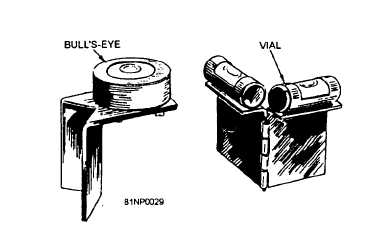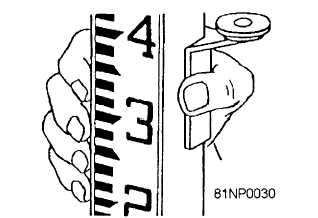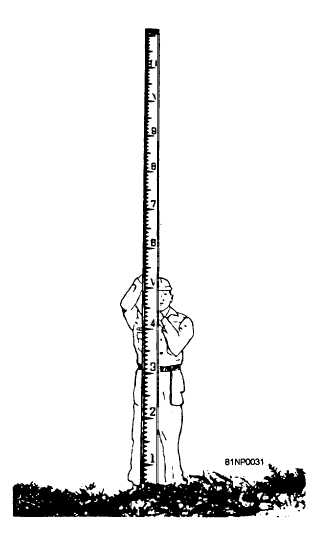Figure 11-49.-Types of rod levels.
and has the scale inscribed on the strip of Lovar metal.
A precise rod usually has a tapering, hardened steel
base. Some are equipped with thermometers, so
temperature correction can be applied. Precise rods
generally contain built-in rod levels.
When a rod reading is made, it is accurate only if
the rod is perfectly plumbed. If it is out of plumb, the
reading will be greater that the actual vertical distance
between the HI and the base of the rod. Therefore, to
ensure a truly plumbed leveling rod, use a rod level.
Two types of rod levels that are generally used with
standard leveling rods are shown in figure 11-49. The
one at the left is called the bull’s-eye level, and one on
the right is the vial level. Figure 11-50 shows the proper
way of using the bull’s-eye level; the vial level is
attached in the same manner.
Proper care should be taken of leveling rods. The
care consists of keeping them clean, free of sand and
dirt, unwarped, and readable. They must be carried
over the shoulder or under the arm from point to point.
Dragging them through the brush or along the ground
will wear away or chip the paint. When not in use, the
leveling rods should be stored in their cases to prevent
warping. The cases are generally designed to support
the reds either flat or on their sides. The rods are not to
be leaned against a wall or to remain on damp ground
for any extended period, since this can produce a
curvature in the rods and result in unpredictable random
and systematic errors in leveling.
Stadia Boards
In determining linear distance by stadia, you
observe a stadia rod or stadia board through a telescope
containing stadia hairs, and note the size of the interval
intercepted by the hairs. Atypical stadia board is shown
Figure 11-50.-Proper attachment of a bull’s-eye rod level to
the rod.
Figure 11-51.-Nadia board.
11-44







